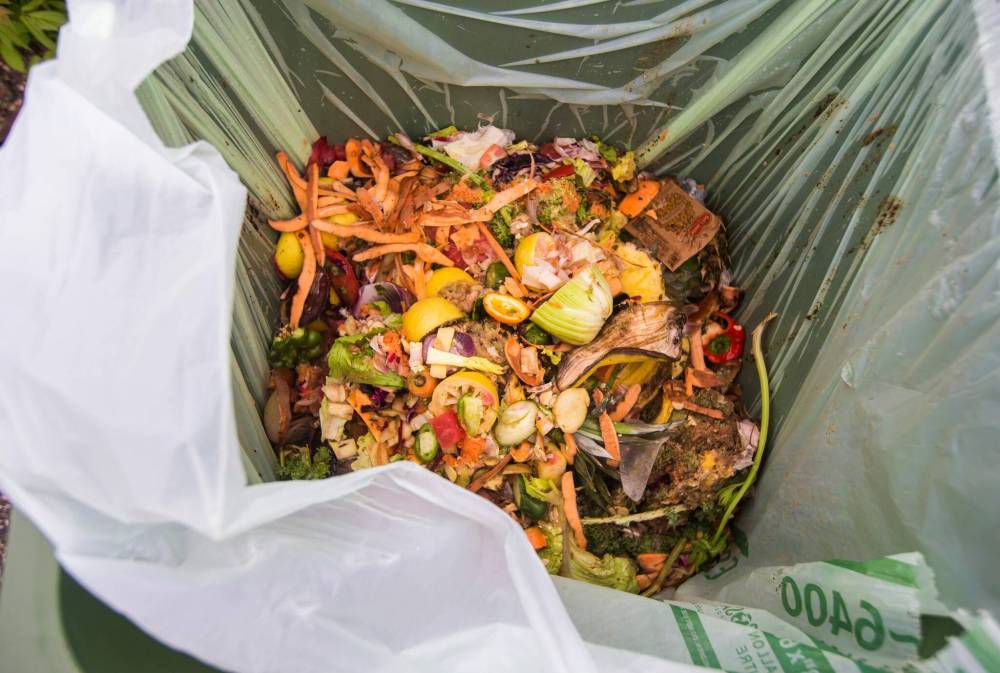
In early October this year, Jitendra Pratap Singh, district magistrate at Uttar Pradesh’s Baghpat district saw a counterfeit water bottle labelled “Billseri” on his table during an official meeting. He immediately ordered a thorough probe and directed the food safety department in Baghpat to verify the authenticity of the mineral water bottles and take action. Upon investigation, the bottles lacked the mandatory FSSAI seal and were traced to a shop in Gauripur Nivada village in Baghpat district.
Over 2,600 fake bottles were seized and destroyed, and the warehouse was sealed. The district administration emphasised the responsibility of private firms to prevent brand misuse and warned the public about health risks posed by counterfeit products. This incident sheds light on a growing issue beyond just counterfeit products: the quality and safety of the water we consume.
While authorities focus on cracking down on fake brands, there is a broader conversation emerging about the water purification process itself and what we may be losing in the quest for “clean” drinking water. Beyond contamination, even legitimate bottled water may fail to provide the essential nutrients our bodies need. This brings us to a deeper concern about the hidden impact of modern water purification.
Omkar Gaonkar, who works on soil and water pollution monitoring, emphasises the critical oversight in the purification process that results in the removal of natural minerals. “When water is bottled and subjected to industrial purification processes, we strip it of essential minerals that our bodies need to function optimally,” he explains. Natural water is rich in minerals like magnesium, calcium, and potassium, which play crucial roles in bodily functions.
He elaborates on the specific minerals that are often lost in the purification process. “For instance, magnesium is vital for energy production and muscle function, while calcium is essential for bone health. When these minerals are removed, the water becomes less beneficial,” he warns.
This points to a significant dilemma: are we consuming water that merely quenches our thirst but fails to nourish our bodies? As water sommeliers suggest, the perception of ‘pure’ water has led many to overlook the fundamental nature of water’s mineral content. Fatimah Zohra, a nutritionist based in Delhi, echoes this sentiment, stating, “Purified water may quench your thirst, but it does little else for your health. The demineralisation process can lead to deficiencies that manifest in various health issues, from muscle cramps to bone health problems.
” Many bottled water companies claim to add minerals back into the water after purification to restore its nutritional value. However, this process isn't perfect. Experts suggest that original water cannot be restored because every water source has a unique composition of minerals.
For example, water sourced from Delhi will have a different mineral profile compared to water from another location. This means that even though companies may add minerals back into purified water, the result is not the same as the natural mineral composition. While it is possible to meet standard mineral composition guidelines required for drinking water, this doesn’t necessarily mean the water will provide the same health benefits as its natural form.
According to Swapnil Shrivastav, founder of Uravu Labs, while the process of re-mineralising purified water is effective, it’s difficult to achieve a perfect restoration of the water’s original mineral balance. “I don't think a hundred percent restoration of the natural balance is possible,” he explains. Shrivastav emphasises the need to understand the composition of the water before it was purified, stating that, “It's very important to first understand what was there in the natural water to begin with, and then what you are removing and what you're adding back.
” The effectiveness of the process can vary, as different natural water sources, such as spring waters, may contain varying levels of minerals like bicarbonates or magnesium. He also points out that the water testing process itself can sometimes be limited, with regular tests only accounting for 28 to 30 parameters, while more detailed tests can identify up to 60 to 100 trace minerals. “There are a lot of these trace minerals that are hard to quantify in regular testing,” Shrivastav adds.
However, he asserts that it is possible to closely replicate natural mineral compositions in purified water. Shrivastav highlights that individual preferences and regional practices can also influence perceptions of water quality and mineral content. “In Europe, people drink sparkling water, while in India, most people don’t like it,” illustrating how cultural differences play a role in water consumption habits.
Despite these challenges, his startup has managed to achieve significant success in re-mineralising purified water, demonstrating that while the process may not be perfect, it is highly effective in recreating near-natural water quality. The implications of consuming demineralised water extend beyond mere hydration. A recent Israeli study conducted by the Taub Center has raised concerns about the health risks associated with consuming desalinated water, which lacks essential minerals.
The study found a correlation between magnesium deficiency and an increase in conditions such as type 2 diabetes and ischemic stroke and even cardiac problems.” “People often overlook the cumulative effect of mineral loss in their diet. Symptoms such as fatigue, irritability, and even digestive issues may stem from insufficient mineral intake, particularly magnesium,” Zohra says.
Increasing health concerns and unavailability of clean drinking water have led to the growth of the bottled water market in India. The major bottled water brands operating in India are Bisleri, Kinley, and Aquafina. According to the Trade Promotion Council of India, the packaged drinking water bottle market in India was valued at $24 billion in 2019.
The market value of bottled water is estimated to reach over 826 billion rupees in 2030, growing at a compound annual growth rate of 14.03 per cent between 2022 and 2030. The drinking water industry in India is regulated by the Bureau of Indian Standards (BIS) under the IS 14543 standard for packaged mineral water.
As Shrivastav points out, “Companies must comply with these standards when selling bottled water; however, there are issues with duplicate and spurious water bottling companies that may not adhere to regulations.” Many manufacturers bypass mandatory BIS certification, leading to the sale of substandard water that lacks essential safety checks. Additionally, there are concerns over the depletion of natural water sources and the environmental impact of plastic waste generated by bottled water.
The industry is also facing scrutiny for its over-reliance on purification processes that strip water of essential minerals, raising questions about the health benefits of commercially available water. The urban demand and tourism fuel growth, regulatory enforcement and sustainable practices remain critical to the long-term health of this sector. BIS plays a crucial role in ensuring that licensed manufacturers comply with the established standards for both packaged drinking and mineral water.
Microplastics have become a growing concern in bottled water, with several studies revealing their presence in a significant portion of the products. A 2018 study by Orb Media, for instance, found that 93 per cent of bottled water samples from major brands contained microplastics, with an average of 325 plastic particles per litre. These tiny plastic fragments, less than 5 millimetres in size, can enter the water during the bottling process or from the plastic packaging itself.
While the long-term health effects of ingesting microplastics are still under research, experts believe they can cause harm by carrying toxic chemicals or by accumulating in the body over time, potentially leading to inflammation or other health issues. The dangers of microplastics extend beyond their immediate health risks. Studies suggest that microplastics can act as carriers for harmful pollutants, such as heavy metals or organic contaminants, which can further exacerbate their toxicity when ingested.
Moreover, the plastic pollution created by bottled water production and disposal only adds to the environmental crisis, as millions of tons of plastic waste end up in landfills and oceans each year. With the global consumption of bottled water on the rise, addressing the presence of microplastics in this industry is becoming increasingly urgent for both public health and environmental sustainability. Amidst the growing awareness of these issues, innovative solutions are emerging, Shrivastav and his team at Uravu Labs aim to provide a sustainable source of water that retains its mineral content.
“We believe that harnessing moisture from the air can create a sustainable source of water that preserves its natural minerals,” he explains. “Our goal is to create a product that not only quenches thirst but also nourishes the body.” “The idea of extracting water from the air moisture is promising.
It addresses both the scarcity of drinking water and the need to retain essential minerals. This could be a game-changer for public health,” says Gaonkar. This shift toward sustainable practices signifies a change in how society views water consumption.
“If we can shift the focus to sustainable water sources that maintain their mineral integrity, we can significantly improve public health outcomes,” Shrivastav adds. In a market flooded with bottled water options, transparency is essential. Companies should be held accountable for their claims about mineral content and the health benefits of their products.
If companies are adding minerals, they need to be transparent about the types and quantities of minerals they are adding. The Ministry of Consumer Affairs mandates that packaged drinking water labels must clearly display the name of the product, processor's name and address, brand name, batch or code number, date of processing/ packaging, details of any disinfection treatment, expiry date, mandatory ISI mark, MRP, net volume, FSSAI license number, and customer care information. All information on bottled water labels, as with all other food product, should be truthful and substantiated with facts, the International Bottled Water Association states.
The journey toward improving our understanding of water consumption has only just begun. As consumers demand better quality water, industries must respond by prioritising both hydration and nutrition. By addressing the critical issue of mineral loss in drinking water, we can pave the way for healthier communities.
“Pure water should not just quench our thirst; it should nourish our bodies,” Zohra concludes. The realisation that water is not merely H2O but a vital source of essential minerals reshapes our perspective on hydration. In this age of information, the onus is on consumers to become informed advocates for their health.
“We have the power to drive change,”Shrivastav asserts. “If we demand transparency and quality, companies will have no choice but to adapt,” he adds. Natural mineral water is the highest grade of water, it means that the water is microbiologically pure and pristine without the presence of bacteria and other contaminants.
It only requires simple filtration to remove sand or any turbidity, but the natural mineral composition is kept intact. Here are the four important minerals our water must contain: ● Calcium: It is important at all ages for healthy growth and bone development ● Magnesium: It is an important element in water as it’s been shown to prevent heart disease ● Sodium: It is more of a double-edged sword; we need a small amount to maintain a balance of water and minerals ● Fluoride: Fluoride is naturally found in water in some areas of the world and intentionally added in others to reduce levels of tooth decay Researchers have discovered bottled water sold in stores can contain 10 to 100 times more bits of plastic than previously estimated. A 2018 research on Synthetic Polymer Contamination in Bottled Water had first detected the existence of micro- and nanoplastics in 93 per cent of samples of bottled water sold by eleven different brands in nine countries.
India has an expanding Bottled Water Market valued at USD 3,792.39 million in 2023, and it is expected to reach USD 8,922 million by 2030. Here are a few reasons on why bottled water may not be as healthy as you think it is: ● The water could be sourced from anywhere, it could even be tap water or from a municipal supply ● The common denominator for most is that water is purified through RO(reverse osmosis) along with other processes to increase shelf life ● All bacteria and contaminants are removed from the water to make it safe for consumption.
However, the process also removes all the minerals in water ● For every litre of water purified using RO, at least three or more litres is rejected The result is bacteria-free water but it is also completely demineralised.














